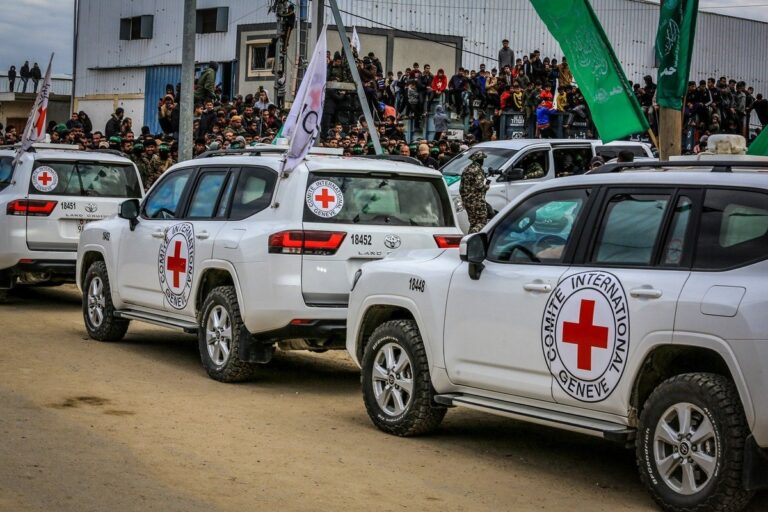By Rabbi Yair Hoffman for 5tjt.com
Winter break is approaching quickly. Some stay home and thoroughly enjoy the break. Some go to Eretz Yisroel. Some go to Florida. And some go skiing.
Some go with their family, and some go with their friends. But one of the most popular activities during “winter break” is that trip to the mountain resort which offers skiing and snow-tubing. It is one of those rare activities that parents, younger children, and older children can all enjoy. It is certainly loads of fun, but it does bring to mind a question.
Are there any halachos that apply to these activities of which we should be aware? What follows is a discussion of the halachic aspects of skiing. For the sake of brevity, however, we will try to limit the discussion to less than three thousand words.
HEALTH
One halachic aspect of skiing is health. Skiing is actually a remarkably healthy activity. Experts say that one can lose up to 3,000 calories during six hours of skiing. It can help you lose up to five pounds of weight in a week. It can tone stomach muscles, boost immunity and even relieve depression. Exercising is one of the best ways to maintain health. Indeed, according to numerous Poskim, exercising, when done in a private and modest venue, is actually the fulfillment of a Torah commandment – v’nishmartem me’od l’nafshosaichem (Dvarim 4:15).
TO ACT LIKE AN EVED HASHEM
A second halachic aspect of skiing involves always conducting ourselves like a true eved Hashem. There is another central halacha that permeates every possible activity and is the underlying thread behind the halachos that we find below. That central halachah is to act like a true eved Hashem in all we do.
- Before actually skiing, carefully review the rules posted in the lodge. There are rules of decorum, who goes first, where you may not stop, and the method of actual skiing. For example, on certain slopes the management does not want skiers to go down straight because it will build up too much speed. They want all skiers to circle left and right, following the poles and indicated path. Ignorance of the resort rules is not an excuse. Every parent or responsible adult should review the rules with everyone in the group.
- Never cut in front of the line before others. There is a huge temptation, especially in regard to snow tubing to cut in front of the line and go up again without waiting one’s turn. This is a form of stealing, as it limits the amount of time that others have on the slopes as well. Unfortunately, this too should be discussed by the responsible adult prior to getting on the slopes and or the snow tubing site.
- Hold the door open for others. It is proper conduct and courteous behavior to hold the door open for anyone in sight when they enter or exit the lodge. The great Tanna Shammai would smile and offer a greeting to anyone who he came in contact with, and was the first to offer it. In our times, holding the door open would be the social equivalent.
- Never exchange lift tickets with another in order to attempt to save money. Skiing and or snow tubing is an expensive activity, and the temptation to save money by exchanging lift tickets or the like, does exist. This, however, is outright theft and should never be countenanced. This too is something that, unfortunately, should be discussed prior to the arrival at the ski resort.
- Always clean up after oneself and family members. People often take breaks for lunch or supper when it is a night snow activity. Wrappers must be thrown out and spills must be cleaned up. It is prudent to bring a rag or napkins along as well because often the resort may run out of paper towels.
- Never block an emergency exit or even a regular exit when unloading or eating. The management has an obligation to ensure the safety of its patrons and often views this very negatively. Before entering the lodge, one should look to see where the safety exits are in order to make sure that one does not block it.
- When making a minyan, do not block others from their regular course of movement. People do not like the idea of not being able to get to where they have to go because a group of people are blocking them.
TOCHACHA
A third concept in skiing involves seeing others behaving improperly and what to do about it. What if you see someone else not adhering to these concepts? It may be prudent, in a gentle tone to remind them of the severity of the issues involved. What is the source of this idea? We find it in a verse in Vayikra 22:32 – “Lo sechalelu es shaim kodshi.”
WOMEN AND SKIING
What about women skiing in general? There are no less than four possible issues involved in women wearing ski pants:
MEN’S CLOTHING ISSUE
So a fourth issue involves the halachic question of women wearing ski pants. Pants, by their very nature, may possibly be considered men’s clothing. If so, it may be a violation of the verse in Dvarim (22:5) not to wear clothing of the opposite gender. There are two explanations for the prohibition. The first is that found in the Sefer haChinuch (Mitzvah 542) that the reason for the prohibition is to prevent inappropriate mixing between genders that can lead to inappropriate activity. The second reason is found in the Rambam’s Moreh Nevuchim. Essentially, he states that the Torah concerned with the inappropriate thoughts that cross-dressing can engender.
Perhaps we can suggest that the debate cited in the Acharonim regarding Purim as to whether or not one may dress up with some clothing of the opposite gender but not all clothing may revolve around this point: According to the Rambam, even one article of clothing of the opposite gender could engender inappropriate thoughts. According to the Sefer HaChinuch’s reason it would not apply. The Mishna Brurah recommends being stringent.
There are also Poskim who cite proofs from psukim that indicate that pants are a uniquely male article of clothing, by definition.
TZNIUS (MODESTY) ISSUE
A fifth halachic issue is the concept of Tznius – modesty. The Meiri in Kesuvos (72a) explains that there is a general prohibition in appearing in immodest attire. The sages explain that the honor of a Bas Melech is pnimah – inward. The Queens of England has a certain dress protocol, that at least in some form or another, was once generally kept by the first ladies in this country as well. An inherent aspect of pants is that by nature it is form revealing, and thus not in line with the parameters of the ideal form of modesty. The Radbaz (Responsa #770),and the Shach (YD 340:22) both write that it is forbidden to dress in a manner where one would be able to detect the shape of the limb through the clothing. Indeed, although we do not pasken like this opinion, the Bach (Yoreh Deah 340:10) goes so far as to write that it is equivalent to the bare skin. Other Poskim who forbid seeing the shape of the lower limbs are the Chochmas Adam (Klal 152:6), the Kitzur Shulchan Aruch (195:3),the Be’er Heitev (340:13), and the Maharsham (Daas Torah 75:1).
WAYS OF THE GENTILE ISSUE
What about ski pants? A sixth question that perhaps could be applied to ski clothing, although not specifically discussed by Rabbi Moshe Feinstein zt”l (Igros Moshe YD I #81) in his responsum, involves a discussion of a possible violation of ubechukosaihem lo sailechu, “do not walk in their ways.” It is a violation of walking in the ways of the gentiles if one adopts a practice that originated and is practiced by gentiles that involves either idol-worship or immodesty. The discussion may reflect upon how we view ski pants for women.
LIFNEI IVER ISSUE
A seventh halachic topic, discussed by Rabbi Ovadiah Yosef (Yechaveh Daas III #67) zt”l, is the prohibition of v’lifnei Iver lo sitain michshol – do not place a stumbling block in front of a blind man.” Some of the ski pants or snow suits, it seems, would fall under this category.
And now onto the rulings of the Poskim regarding the four aspects of women skiing.
WHAT THE POSKIM SAY
It seems that there are three opinions on the matter.
It is clear from a responsa of Dayan Yitzchok Weiss zatzal (Minchas Yitzchok Vol. II #108) that he is of the opinion that skiing is not permitted for women because they may never wear ski pants, even if it is covered over with a skirt.
Rav Ovadiah Yoseph wrote in a responsa (YO YD VI #14) that when dealing with certain (baggy) pants that are clearly designed for women and are so loose that they are not shape revealing, they do not violate either of the two issues, although he clearly expresses a preference for the fully modest skirt over this type of pants. It would seem from the responsa that he would hold that thicker ski clothing may not necessarily reveal the shape of the lower limbs. However, someone once mentioned to me that he had subsequently changed his mind on the matter of baggy pants. I have not found this in print, though.
Rav Elyashiv zatzal, however, held otherwise. He held (as cited in the Yashiv Moshe page 170) that women may wear ski pants if they are covered by a skirt. The next question is whether the length of the skirt that goes over the ski pants would cause a danger either to her or to others on the ski slope. Clearly the skirt must be wide enough so that it not pose a danger to herself or to others.
It seems that most observant female (Ashkenazik) skiers in Eretz Yisroel follow the view of Rav Elyashiv. Working with this, although one should ask one’s own Rav or Posaik, it would seem that it would be forbidden for a woman wearing an appropriate length skirt to ski on anything but a beginner’s level slope., on account of the danger. Later, when she is certain that she can manage and she has a wide enough skirt, then she can go down the more advanced ones.
Once again, everyone is reminded to ask their own Rav or Posaik regarding these specific halachos.
IS SKIING FORBIDDEN ON ACCOUNT OF SAFETY?
Safety is a seventh halachic issue and one that is an extremely important one.
Most people believe that the issue is so important that there is a Mitzvah in the Torah about it. This view, however, is not so accurate. There are actually three Mitzvos in the Torah that deal with safety. The first mitzvah is “ve Nishmartem me’od b’nafshosaichem” (Dvarim 4:9)–the mitzvah of protecting our health and well-being. But there is a second verse six verses later (Dvarim 4:15), “Rak hishamer lecha.”
This verse is understood by most Poskim to actually comprise a second mitzvah to take special care (see Rav Chaim Kanievsky: Shaar HaTeshuvos #25). The third mitzvah is “V’Chai Bahem”–And you shall live by them (VaYikra 18:5).
We thus have three separate Torah Mitzvos involving safety.
TO MAKE EVERY EFFORT
There is more too. The Ben Ish Chai writes a person should make every effort to ensure the general safety of himself and those around him (Parshas Pinchas year cycle #2). The Turei Zahav in his commentary to Choshain Mishpat (427:10) cites a midrash on Shir HaShirim saying that when one does this and protects himself from dangers and damage, he is protected, and receives extraordinary credit for the mitzvah too.
So is skiing forbidden?
To ascertain the answer to this question, the first question we need to ask is how many people die annually on average from skiing and snowboarding accidents?
HOW MANY PEOPLE DIE FROM IT?
According to the National Ski Areas Association, an average of 38 people in the U.S. are killed each year while skiing or snowboarding. Colorado accounts for about 25% of these deaths each year.
But there are millions of people who ski each year. In last year’ season Colorado logged some 12.5 million skier visits. In the entire country there are some 53.6 million skier visits, as reported by SnowSports Industries America.
FATALITY STATISTICS
So how many die? This means the death rate for skiing is about 1 in 1.4 million people die when they ski. You’re more likely to be killed driving your kid to Yeshiva.
Where do most of the fatal accidents in skiing actually happen?
The fatal accidents happen in the well-groomed blue cruiser trails where the average speed of skiers ranges from 25 to 40 mph.
MEN ARE WORSE
Who is most at risk for dying while skiing and snowboarding?
Believe it or not, it is more dangerous for male skiers. Dr. Jasper Shealy of the Rochester Institute of Technology has studied ski-related injuries for more than 30 years. His studies have found that 70 percent of ski fatality victims are men ages late teens to late 30s.
Of the 35 national fatalities in the 2014-15 season, 28 were male skiers and one was a woman skier. The other six death were on account of snowboarding. All six of the snowboarders were women.
DEBATE ON DANGER LEVELS
There is an eighth halachic issue to discuss and that is the general debate in issues of danger. There is a fascinating argument between Rav Moshe Feinstein zt”l in his Igros Moshe (CM I 427:90) and Rav Chaim Ozer Grodzinsky zt”l in his Teshuvos Achiezer (Vol. I #23) as to how halacha views various risk levels. There is a halachic concept based upon a verse in Tehillim (116) known as “shomer p’sa’im Hashem – Hashem watches over fools.” The Talmud (Shabbos 129b, Yevamos 1b) uses this idea to permit certain behaviors that would otherwise be considered dangerous. It is utilized in combination with the idea of “kaivan d’dashu bei rabim – since the masses have already treaded there” we apply the idea of Hashem watches over fools and permit the item under discussion in terms of halacha.
SOCIAL ACCEPTABILITY VERSUS STATISTICAL DANGER
Rav Feinstein zatzal seems to interpret this concept as social acceptability – in other words, if the danger is not one that is socially acceptable, then the danger is not halachically permitted, because the verse of “veChai Bahem” comes into play and the person would be in halachic violation of endangering himself. For example, travelling 62 miles an hour in a 55 MPH zone may be silly, foolish, illegal and dangerous, but according to Rav Feinstein’s parameters it would not be a violation if it was socially acceptable. Travelling 90 MPH in a 55 MPH zone is not socially acceptable and would therefore be a full violation of Halacha as well. Skiing is a socially acceptable form of sport activity. According to his view it would probably be permitted.
According to Rav Chaim Ozer Grodzinsky, the concept of Shomer p’sa’im Hashem was only applied in the Talmud to remote concerns and a situation where there is only a small percentage of a small percentage of danger. It seems to this author that Rav Chaim Ozer is taking into account empirical data in the halachic definition of what constitutes a danger much more so than does Rav Feinstein. Rav Feinstein’s halachic definition is more predicated upon the public perception of the danger.
It would seem that according to both opinions skiing would be a permitted activity. However, each person should pose the question to his or her own Rav or Posaik. The author has been told that one of the Gedolei HaDor had actually forbidden it. It is unclear whether the disapproval was from the perspective of “What do you need it for?” or whether he holds that it is genuinely forbidden.
EXTREME SKIING
On the other hand, extreme skiing is neither socially acceptable nor is it statistically safe. What is extreme skiing? It is a form of skiing that is generally performed on long, steep slopes in mountainous terrain. Typically the slope ranges from 45 to 60+ degrees, or grades of 100 to 170 percent. The French cactually coined a term for it as early as the 1970’s. It was called, ‘Le Ski Extreme.’ Among the first practitioners was Swiss skier Sylvain Saudan. In 1967, he made the first descents of slopes in the Swiss, French and Italian Alps that were previously considered impossible.
Older readers will recall the invariable broken leg that often accompanied ski trips in the past. By and large this form of injury has been virtually eliminated as the technology of the equipment has vastly improved since those times. The emphasis upon safety in the sports manufacturing world has developed great change. These changes could very well affect the halacha.
BITUL TORAH
One final ninth halachic discussion is that of bitul Torah for men. We must always remember, “Ki Haim Chayeinu” – Torah is our way of life. Danger levels may have changed over the years, but one thing that has not changed is the fact that skiing does involve a lot of bitul Torah. That being the case, it should only be done by those who actually need the diversion, for one reason or another.
The author can be reached at [email protected]












10 Responses
So Frum Yidden need to be told to act Menschlicht and not steal.
Mi Ka’amcha Yisroel!
Not very long ago (in the generation of the poskim quoted in this article), skiiing, or similar exciting vacation venues offered by the secular culture, were far from the lifestyles of those in “the yeshiva world” (bnai Torah).
The general attitude was what the author appropriately termed “What do you need it for?”
Perhaps we should be asking how and why lifestyles of some in our community have evolved to the point where “I do need it” is increasingly the mantra?
Many interesting concepts here. The biggest portion of this article is about eved Hashem, which, in this discussion, boils down to following the local rules and being courteous to others. Does the author think Jews in particular need to be reminded of this? I certainly think that the way bochurim run through airports in Israel demonstrates a lack of common courtesy, a glaring lack of eved Hashem.
And while we are at it, consider how eved Hashem affects our obligations to comply with Covid rules, like wearing masks, getting vaccines, and social distancing.
Yes. Everyone needs reminders. This is why we always learn and review. This is why we study Mussar seforim. This is the reason for many mitzvos. Many of the Kohain Godol’s vestments were donned to remind him that he was serving Hashem in the Bais Hamikdosh even though you might think such a great man does not need to be reminded of the obvious.
I am proud of the fact that we have authors like Rabbi Hoffman who understand this. I do not agree that bochurim are discourteous. They are the nicest young men I ever see. They do not have music blasting or wear their pants halfway down. They do hold doors open and offer their seat to their elders. As guests at my home, I find them well mannered, helpful and delightful. Do you know why they are so refined and considerate? Because they are reminded of the Torah’s expectations in their studies.
Any OBJECTIVE observer knows this to be true and will not harp o rare exceptions!
Very insightful as usual. Some new thoughts, some intuitive (i.e. bitul torah concerns) as would apply to ANY recreational activity. To be honest, I’ve been skiing for years (mainly out West and BC) and the frum yidden I’ve encountered are almost always very respectful of both other skiers and local rules. My biggest concern/fear (unrelated to yidden) are the snowboarders hurtling down the slopes with virtually no concern about the rest of us. That terror alone (along with my knees) are the principal reason for migrating from downhill to X-Country.
It’s just skiing
I was skiing with my son once in Switzerland. I was graded Swiss level 4 (can teach others) and did black slopes. Suddenly on a red slope one of my skis just clicked off! I was lucky B’H’ and was not injured. Then it happened another time minutes later. I got to the bottom and went to the ski rental and he examined the ski.
Listen to what he said: “There was some ice packed underneath between the boot and the ski which got stuck there when you walked around the snow in the ski boots. When you then ‘clicked in’ the boot to the ski- you thought you were secure, but it was just waiting to fly off!”
I asked “What can be done to ensure this doesn’t happen again?” He said “NOTHING….. IT’S A RISK YOU TAKE EVERY TIME YOU SKI” I haven’t skied much since -I’m too scared!
For those who are shocked of reminders to behave: there seems to be relative neglect of mitzvot bein adam l’havero becqause the whole world (sort of) does it, while kashrus and hats makes us feel unique. I do not see any indication in ten Commandments that the second half is less important because non-Jews also understand them. Maybe if the whole world understand them – we taki need to be even more makpid here so that we will be seen as am kadosh even here. This is somewhat harder than just dress up separately, but who said that all mitzvos should be easy.
At the end, Hashem gave us two feel to walk. So, suddenly, we are putting on skies and going down hill – for what? This is literal “lifnei ever” for yourself – you are going into an obstacle course while your vision is snowed.
Health claim is specious, you can walk around the house or swim in a lake with same effects. Driving to yeshiva or taking risks in process of earning parnosa is one thing, but meaningless expensive risks are different. Your yeshiva should have on the financial application – how often do you go skiiing? and decrease discount accordingly.
The well known Yiddish expression comes to mind, שייגעץ, וואס גליטשסטו? לאז מיר!